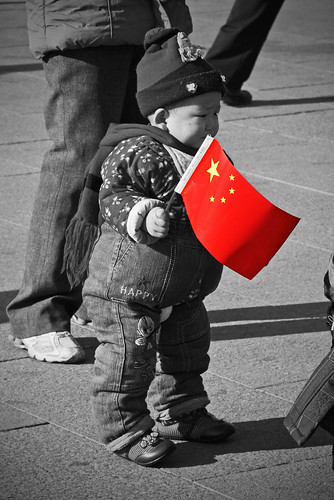
The curriculum the team has developed for our sophomore oral students is focused on communication as a global citizen. The first semester, students learn about cultural values such as individualism and collectivism, particularism and universalism, and high and low context communication. Second semester, students explore and discuss how these values impact different facets of culture. The year culminates with a large group project where students create their own culture. They choose their cultural values and flesh them out in various aspects of culture like folktales, city planning and development, money, and flags. The focus of this week's lesson was "Flags of the World". Students examined and discussed various flags from around the world, and determined common denominators of colors and symbols between these flags. They also discussed the high context meaning of a lot of the world flags. As a warm-up activity to the lesson, I had students teach me about the Chinese flag. After living in China for four years, I'm a little ashamed to admit that I really didn't know what the symbolism of the flag was. Prior to class, the closest guess I had was that the red stands for good fortune (which is why many of the new years' blessings are red). However, I would have been entirely wrong. This is a red with a much different and much more specific meaning. While there was some disagreement about other aspects of the flag, everyone agreed that the red was the blood of the revolutionary martyrs who fought for China. However, I was quite surprised that the students were unsure about the meaning of the stars on the flag, as well as the significance of the color of the stars. The conjecture was put forth that the four small stars represented the four classes in society, but students couldn't remember what the four classes were. Someone else just said they represented the people in China. All were fairly confident that the large star represented the communist party. What was somewhat ironic was that later on, when discussing the American flag, they were much more certain of the meaning of the various symbols on this flag than on their own. However, when I went home to research the Chinese flag, I discovered that indeed, the meaning of the stars is somewhat vague and has various interpretations. One of the more common explanations is the four classes (workers, peasants, petty bourgeoisie, and patriotic capitalists). Another common explanation is that the stars represent various ethnic groups in China. The official line seems to be somewhat vague, acknowledging only that they represent the people of China. Interestingly, the flag is a result of a contest in 1949 to design China's flag. This week, our sophomore students' homework is to redesign China's flag. The five best flags out of all of the sophomores win a meal with the sophomore oral foreign teachers. Look for some of the winners sometime next week!















No comments:
Post a Comment